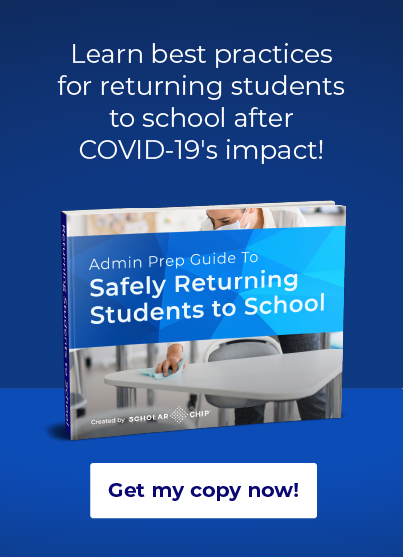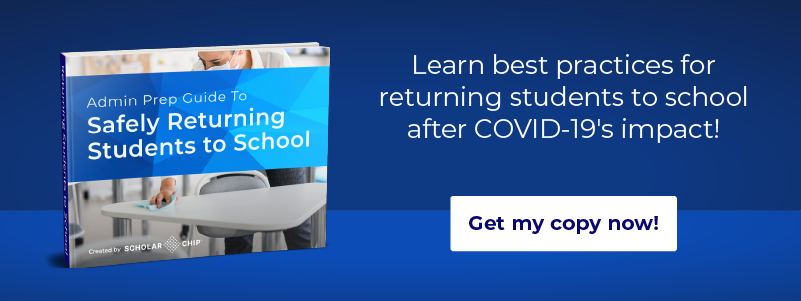When the global pandemic forced schools across the country to close in the spring of 2020, districts considered it a temporary measure. Even New York, which experienced the first “hot spot” of infections, initially planned to have students back at their desks after spring break. By the first week of May, as the number of infections grew, forty-eight states and Washington, DC decided that the safest course was to keep school buildings closed through the end of the school year. Districts were able to continue academic progress, to some extent, by shifting to remote learning. While many students adapted well to this new program, they lacked the important social interactions that in-person learning provides, so students, as well as teachers and parents, look forward to seeing classrooms reopen.
As the year continues, states are beginning to reopen businesses, albeit with mixed results. Several states are experiencing a resurgence in COVID-19 cases as they lift restrictions. Despite the risks, the American Academy of Pediatrics urges policymakers to “start with a goal of having students physically present in school,” citing the importance of the school environment to children’s well-being and development.
On the subject of school reopening, Dr. Anthony Fauci, Director of the National Institute of Allergy and Infectious Diseases, stated, “[I]t really depends on the level of viral activity, and the particular area that you’re talking about. What happens all too often, understandably, but sometimes misleadingly, is that we talk about the country as a whole in a unidimensional way.”
This means that the situation in any state or any county within a state may change suddenly over the summer, and schools may need to remain closed. However, school leaders must be prepared to reopen safely, and strategies to make social distancing in schools possible must be part of these plans.
What Is Social Distancing?
COVID-19 is a new virus, but our understanding of how it spreads and replicates in human hosts is growing. That said, as we currently lack a vaccine, the CDC is urging people to maintain a physical space of at least six feet from others. This reduces the ability of the virus shed by an infected person to reach and infect another. In practice, individuals should maintain this distance from people outside their immediate household.
Schools that plan to reopen for the 2020-2021 school year will need to include social distancing measures, along with other precautions, in their reopening plans. This can be difficult with very young students, who are unable to understand the concept of social distancing in schools, and special needs students, whose education plans may require physical contact with school staff. Additionally, special consideration must be given to vulnerable school personnel. Older adults and those with underlying medical conditions are at greater risk of experiencing serious, even life-threatening illness if infected with the coronavirus.
How the virus is transmitted
An infected person sheds virus into the surrounding environment from their nose and mouth. A study published in the New England Journal of Medicine found that the virus may remain viable for several days on hard surfaces. The virus enters the body through the mucous membranes of the nose, mouth, and eyes, so someone may pick up surface virus on their hands and then become infected by touching their face. However, research is showing that this is not the most common way that the virus is spread. In infected people, the virus proliferates in the upper respiratory system. When infected people breathe, talk, sing, cough, and sneeze, they emit virus-carrying droplets. Depending on the airflow in the environment, the droplets may remain suspended in the air or quickly drop to the ground. An uninfected person contracts COVID-19 when an infectious amount of the virus lands in their mucous membranes.
The Best Way to Slow Transmission
Based on our current understanding of the virus, the CDC recommends a three-pronged strategy for reducing transmission, or the three W’s.
Wear a Facemask
The effectiveness of facemasks has been debated since the early days of the pandemic. The CDC now recommends that people wear face coverings while out in public, and research backs up claims that facemasks can reduce transmission rates by capturing most of the droplets emitted from infectious individuals.
Wash Hands
The CDC urges people to regularly wash their hands with soap or use an alcohol-based hand sanitizer. Both dissolve the fat membrane surrounding the virus so it falls apart into harmless particles.
Watch Your Distance
Viruses cannot survive on their own: they need host cells to live and replicate. Keeping people separated will thwart transmission. Although an uncovered sneeze can spread infected droplets as far as 27 feet, in most cases, the CDC recommendation of six-foot spacing for social distancing is adequate. The objective of social distancing is to keep people who are infected with the virus, whether they’re showing symptoms or not, separated from those who are virus free. Members of the same household are treated as one unit under social-distancing guidelines.
Staying six feet apart does not come naturally for most people, especially children. Keeping students and staff safe will require changes to the school’s physical setting and a reimagining of schedules and student groupings. When developing reopening plans, school leaders must focus on the following three areas to practice social distancing in schools.
Reduce the Number of People in the School at One Time
Large crowds, particularly indoor crowds, accelerate virus spread. Creating a hybrid program that combines in-person with remote instruction will reduce the number of bodies in a building. Similarly, creating schedules that alternate days at school with days at home or dividing students into morning and afternoon groups will thin out the crowd. Staggering start and dismissal times will reduce the number of students congregating in hallways and outside the school’s entrances and exits. Organizing students into groups and keeping those groups separate will also serve the social-distancing function.
Tight control over visitors is essential. Vendors, substitutes, and parents may need to enter the school building. Implementing an automated visitor management system will facilitate the monitoring of visitors and record maintenance, which may be necessary for contact tracing.
Control Flow of People in and around School Buildings
School security demands close monitoring of building entrances, and for this reason, most schools funnel all traffic through one or two closely supervised doorways. Unfortunately, this forces people to form clusters that make social distancing nearly impossible. Using multiple entrances and exits will thin out the crowds. Schools may wish to assign students and staff to specific entrances for better crowd control. Implementation of a secure door access system utilizing smart ID cards will allow school personnel to efficiently monitor entrances and retain control over who enters the buildings.
Integrating IT systems will allow building administrators and superintendents to access granular- level data on attendance and building activity in real-time via an administrative hub. With these systems, comprehensive reporting options will empower school leaders to identify problems before they spiral out of control.
Outside the buildings, highway cones or painted marks on walkways can further set social-distancing boundaries. Another outside challenge is enforcing social distancing among young children on playgrounds. The only practical way to keep class groups from co-mingling is to assign sections of the playground to each group and stagger recess times to limit the number of children in the schoolyard at one time.
Rearrange Classroom Furniture
The CDC recommends not only spreading desks in classrooms six feet apart but also facing them forward, rather than using configurations with students facing each other. Researchers are still studying the effects of airflow and HVAC systems on virus transmission. Using Plexiglas surrounds on desks may not be advisable, as it interrupts the airflow necessary to disperse the virus. The American Federation of Teachers suggests that schools could reduce class sizes, allowing for better social distancing, by adding portable classrooms. Schools may also utilize large spaces such as gyms or cafeterias for class space.
Carpet time for younger students may continue by marking off appropriate distances with masking tape. School breakfasts and lunches should be served in classrooms rather than have multiple classes congregated in the cafeteria.
Schools in Germany and Denmark have reopened, and they are experiencing success with social distancing in schools. Children generally are able to understand the rules, but the school’s physical environment must support social distancing. Reopening plans should include updating technology to help ease the transition back to school and keep students and personnel safe.
ScholarChip offers unique holistic school safety services based on CDC guidelines to help schools reopen amidst growing health concerns. Through our advanced technology, built and designed for the K-12 environment, schools can identify risk and mitigate the spread of infection. Our solution includes fever screening, visitor questionnaires, symptom and vaccine tracking, in-school contact tracing, alerts, and notifications. Learn more about our advanced COVID-19 solutions or request a reopening strategy session today!


